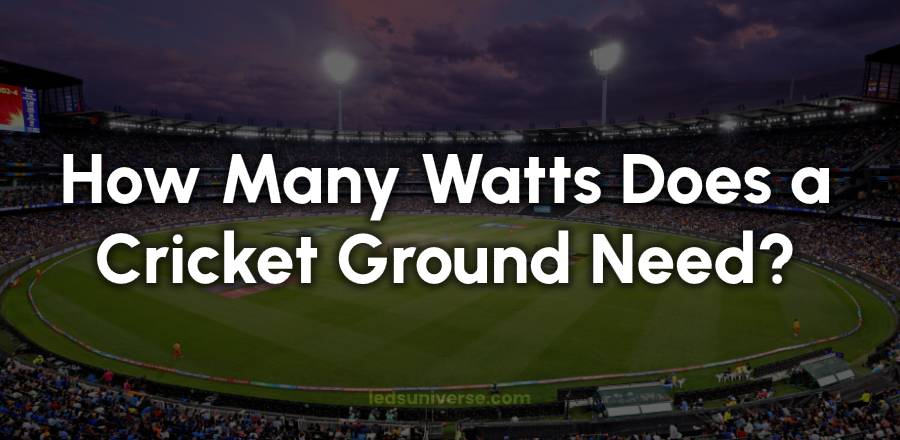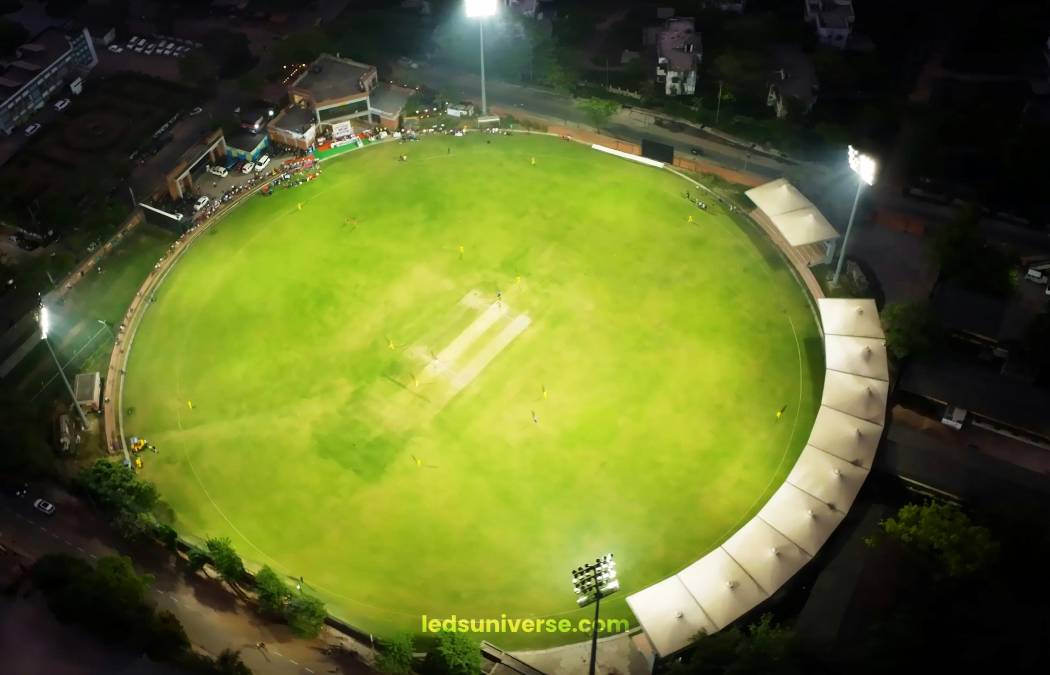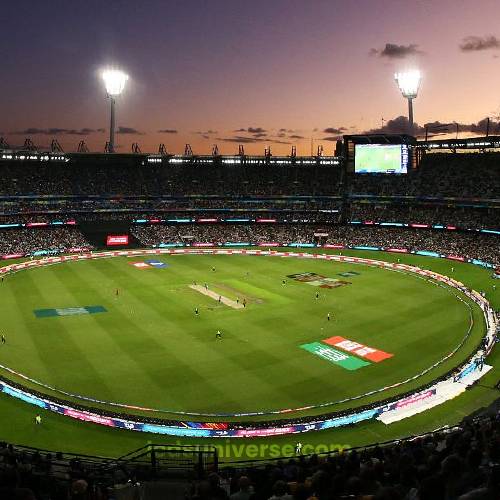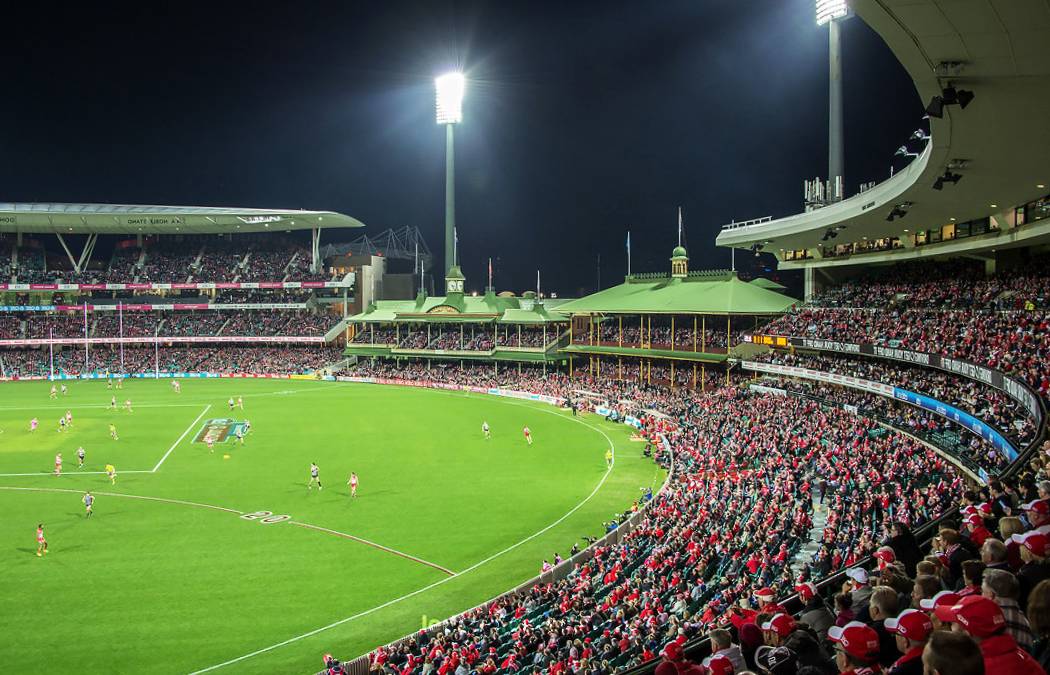
Cricket has always been a sport of fine margins — a split-second decision, a perfectly timed shot, or a delivery that curves just enough under the lights to claim a wicket. As the game evolved to embrace formats like day-night Tests and T20 leagues under floodlights, one invisible but game-defining element took center stage: lighting.
The evolution of cricket, with the increase in day-night and night matches, has placed a emphasis on ensuring that cricket fields are adequately illuminated. As a result, lighting systems must be designed not only to ensure player safety and visibility but also to offer a superior viewing experience for fans, both on-site and in front of television screens. Proper lighting is necessary for ensuring that the game continues smoothly into the evening or night while maintaining fairness and visibility for all participants and spectators.
Reach out for free lighting consultation
Table of Contents
ToggleVarious organizations, including the International Cricket Council (ICC), have established guidelines for the type and intensity of lighting required in different match scenarios. These guidelines are designed to ensure that players can see the ball clearly, while also providing high-quality visibility for television broadcasts and in-person spectators.
| Match Type | Area | Required Lux Level |
|---|---|---|
| Day Match | Entire Ground | Natural light usually sufficient |
| Day Match (Cloudy/Dusk) | Entire Ground | 300–500 lux |
| Night Match | Central Playing Area | 1500–2500 lux |
| Night Match | Outfield | 500–1000 lux |
| Televised (HD) Match | Central Playing Area | Up to 2500 lux or more |
The lux level, which measures the intensity of light falling on the playing field, is one of the most crucial factors when determining the lighting needs for a cricket ground. The level of illumination required varies based on the type of match being played, with night games requiring significantly higher lux levels than day matches.
For a standard day match, the natural light is sufficient for players to perform without artificial lighting. However, as the sun begins to set or if the weather is cloudy, the lighting system needs to kick in. For these scenarios, lighting levels of around 300 to 500 lux are sufficient.
Night matches, on the other hand, require much more robust lighting systems. To ensure proper visibility of the ball and the playing surface, night matches typically require around 1500 to 2500 lux for the central playing area, with the outfield requiring about 500 to 1000 lux.
Televised events, especially those that are broadcast in high-definition (HD), often require higher lux levels, reaching up to 2500 lux or more.

Lighting uniformity is another factor in creating the right lighting environment for cricket. Poorly distributed light can lead to certain areas of the field being brighter than others.
To achieve uniform light distribution, floodlights must be strategically placed around the cricket ground. A uniformity ratio of 0.6:1 is often desired, meaning the brightest area on the field should not exceed 60% greater brightness than the dimmest area.
Glare from artificial lighting can be a issue during night matches. It can cause distractions for players, umpires, and even spectators. To avoid such issues, floodlights must be carefully angled and positioned to avoid direct light in the line of sight of players or cameras.
Although lighting is not needed for the majority of day matches, artificial lighting systems are still required to account for varying conditions like overcast weather or the late afternoon sun. Day matches usually require lighting only at the very end of the game.
During day matches, the artificial lighting is supplementary rather than intrusive, providing just enough illumination to ensure the game continues smoothly as daylight diminishes.
Night matches place greater demands on the lighting system. Since the game is played entirely under artificial lights, the lighting system must be designed to provide sufficient brightness and clarity across the entire field.
For professional night matches, the lighting system should achieve lux levels of 1500 to 2500 lux for the central playing area, with the outfield requiring around 500 to 1000 lux.
Day-night matches begin in daylight and gradually transition to evening or night. For these types of games, the lighting system must be dynamic, with the ability to adjust the intensity of the lights throughout the match.
For day-night games, the lighting intensity must reach the full lux levels of 1500 to 2500 lux for the central playing area once the match transitions into the evening.

Floodlights are typically mounted on tall masts, often positioned at the four corners or sides of the ground. These masts can range in height from 25 meters to 50 meters.
Higher masts help distribute light evenly across the entire field, ensuring that no area is left in the shadows while also reducing the risk of glare.
Floodlights should be angled downwards at a specific degree to ensure that they focus their light on the pitch and outfield, avoiding excessive light spill into the stands or the surrounding environment.
Floodlight masts must be designed to meet stringent safety standards. The installation process for these masts must follow strict engineering protocols to prevent any accidents or structural failures.
Once the floodlights are installed, regular maintenance is required to ensure they remain in good working condition.
In the past, most cricket fields were illuminated using traditional floodlighting systems, often using metal halide lamps. These lamps produce bright, white light that closely resembles daylight, making them well-suited for sports stadiums.
However, while they are effective, metal halide lamps are less energy-efficient, generate significant heat, and take longer to reach full brightness after being switched on.
LED technology has transformed the world of sports field lighting. Modern LED floodlights are more energy-efficient, durable, and versatile than traditional metal halide lamps.
LEDs consume less energy, which helps reduce operational costs in the long term. Moreover, they produce less heat, which makes them more environmentally friendly and easier to maintain.
LED lights also have a longer lifespan, often lasting upwards of 50,000 hours. They require fewer replacements and less maintenance, further reducing costs over time.
LED systems provide instant illumination, meaning they do not require a warm-up period like traditional metal halide lamps.
The future of cricket field lighting lies in smart technology. Smart lighting systems integrate sensors, automation, and artificial intelligence to monitor and adjust lighting conditions in real-time.
These systems can adjust lighting based on factors such as the time of day, weather conditions, or the phase of the game.

The cost of installing a comprehensive lighting system for a cricket ground depends on several factors, such as the type of lighting chosen, the size of the field, and the specific requirements for television broadcasts.
For smaller, local cricket grounds, the cost of installing a basic floodlighting system might range between $100,000 to $200,000. For larger, professional-grade stadiums, the cost can easily exceed $500,000.
Once the system is installed, the operational and maintenance costs must be considered. While LED systems reduce energy consumption, they still require ongoing monitoring, maintenance, and occasional repairs.
Energy consumption remains one of the biggest ongoing expenses. However, with the advent of LED technology and other energy-saving solutions, cricket grounds are better equipped to reduce their long-term energy costs.
Lighting is a aspect of modern cricket, impacting everything from player safety to broadcast quality. By adhering to international standards and utilizing advanced lighting technologies, cricket grounds can ensure that their matches are played under optimal conditions, regardless of the time of day.
As technology continues to evolve, the future of cricket lighting looks increasingly sustainable and efficient, providing benefits for players, spectators, and broadcasters alike. With advancements in LED systems and the integration of smart technologies, cricket fields are set to become even more adaptable, offering a superior experience for all involved.